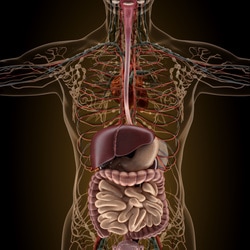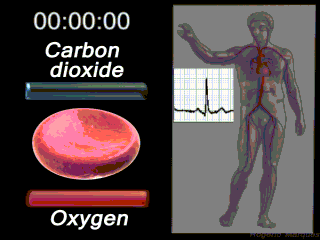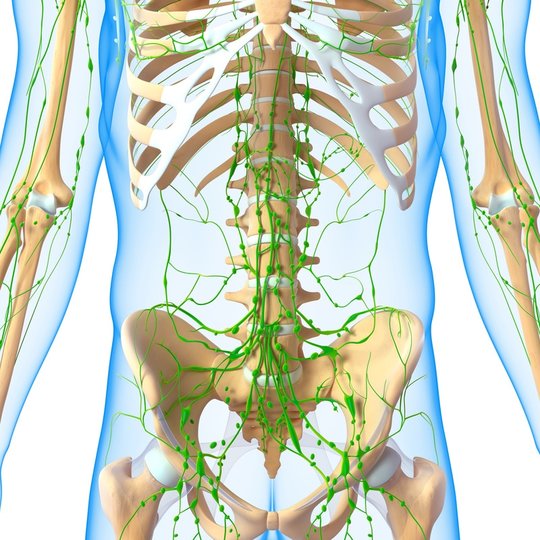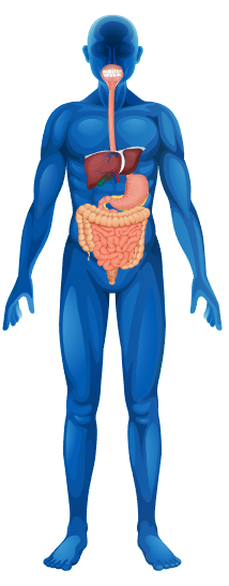Welcome to Your Wonderful Body's
ORGAN SYSTEMS!
The Integumentary System Your skin is so much more that "just a pretty face!" It is easy for us to overlook the important role that our integumentary system plays. The integumentary system is the outer covering of our bodies. It holds the insides inside, and keeps the outside world outside. This system includes our skin, hair, nails, and exocrine glands.
Did you know that your skin an actually an organ? In fact, your skin is the largest organ of your body! Your skin is very thin, only a few millimeters thick, yet it weighs about 10 lbs! In my opinion, you can just subtract that from your weight from now on. FUN FACT: You are losing and replacing skin cells at a rapid rate. Your skin cells are the main contributor to household dust! This gives plenty of food for dust mites. YUMMY! The major functions of the integumentary system is to protect the body by forming a physical barrier against elements of the outside world that can harm us. It protects us from things like diseases, carcinogens, harmful environmental elements and physical threats. |
The Skeletal System "No bones about it!" Your skeletal system does a lot more than you might think!
It allows for movement - Your skeletal system is made up of bones and joints. It prevents you from being a blob on the floor. You could flex your muscles all you want, but if it weren't for those muscles being attached to your skeletal system, you would be nothing more than a pulsating muscular blob on the ground. What a great visual! It provides protection - The skeletal system provides a strong scaffolding that surround major organs of the body and your soft tissues. Notice how the rib cage protects the vital organs of the heart and lungs! It makes blood - red blood cells have a very short lifespan and need to be replaced on a constant basis. This vital job is done by your precious bone marrow. The red bone marrow that lies inside your bones makes red blood cells to replace the old, worn out ones. |
The Muscular SystemYour muscular system is responsible for movement. Your muscles are a big part of who you are. About 50% of your total body weight is made up of your muscles. Each of your muscles is an organ made up of muscle tissue, blood vessels, tendons, and nerves. When we think of muscles, we usually picture a body builder flexing his or her muscles scantily clad and artificially tanned. These muscles are your skeletal muscles, but you also have muscle tissue in your heart, your digestive system and even in your blood vessels! There are 3 types of muscle: Skeletal Muscle Visceral Muscle Cardiac Muscle |
Source saracornelia.tumblr.com
|
Skeletal Muscle
|
Source www.ohmagif.com
|
Skeletal muscle allows for conscious movement of your body. It does this by being attached to two bones that have a joint between them. Activation of a muscle serves to move parts of those bones closer to each other. As you can observe in the body builder, flexing the bicep muscle causes the forearm to "curl" toward the upper arm. Skeletal muscle is the only type of muscle that moves voluntarily. That means that you make a conscious decision to activate your muscles. The other types of muscle (visceral muscle and cardiac muscle) that we'll discuss in a moment, are not under conscious control. |
Visceral Muscle Visceral muscle is smooth muscle. Visceral muscle makes organs contract to move substances through the organ. It exists in the stomach and the intestines of your digestive tract, and functions to push food along. Visceral muscle also lines you blood vessels and regulates blood pressure and movement of blood. As previously, mentioned, visceral muscle is considered an involuntary muscle, because it is not under conscious control. This is a really good thing, because visceral muscle is constantly at work in your body and I could not imagine constantly reminding my digestive tract to work! |
Cardiac MuscleCardiac muscle is found exclusively in the heart and is highly specialized. The beating of your heart is due to the activation of cardiac muscle. This acts to pump blood though your vessels to deliver important, vital nutrients and oxygen to the cells. Cardiac muscle is thankfully under control of the autonomic nervous system which means we do not have conscious control over our cardiac muscle. It would be exhausting to spend valuable brain power on remembering to tell your heart to beat every second or so. Sleeping would be a real problem if that were the case. GIF Animation Source saracornelia.tumblr.com
|
The Nervous System Welcome to your nervous system! Your nervous system is responsible for communication and is the control center for your body. The nervous system is made up of your brain, your spinal cord, your sensory organs, and all of the your nerves. The brain and spinal cord form are considered the central nervous system (CNS). The sensory organs and all of the nerves that lie outside the central nervous system are considered the peripheral nervous system (PNS).
There are two main functional subdivisions of the nervous system; the somatic nervous system and the autonomic nervous system. The somatic nervous system is under conscious control. The somatic system consists of nerves that connect the brain and spinal cord with muscles and sensory receptors in the skin. The autonomic nervous system works without your conscious knowledge or awareness. I like to think of the autonomic nervous system as the automatic nervous system. Your autonomic nervous system maintains your body's homeostasis by regulating your heart rate, blood pressure and rate of respiration. The Endocrine System The endocrine system is made up of all of the glands of the body . The glands are controlled by your nervous system and by hormones produced in the endocrine system. Your endocrine system functions to maintain the necessary homeostasis to keep you alive and well. The endocrine system consists of the hypothalamus, pineal and pituitary glands that lie within the brain, the thyroid gland which lies in the throat area, the adrenal gland and pancreas in the abdomen and the ovary or testes which are female and male gonads for reproduction. |
|
The Cardiovascular System
|
Circulatory Loops
The cardiovascular system consists or two major circulatory loops: the pulmonary circulation loop and the systemic circulation loop. The pulmonary circulation goes from the heart to the lungs (to pick up oxygen) and back to the heart. After this oxygenated blood returns to the heart, it gets pumped out again, but this time it goes through the systemic circulation loop. The systemic circulation loop delivers the oxygenated blood to the rest of the body. Animated GIF By Rogeriopfm - Own work, partly based on File:Grafik blutkreislauf.jpg by Sansculotte., CC BY-SA 3.0, https://commons.wikimedia.org/w/index.php?curid=8626685
|
The cardiovascular system consists of the heart, blood vessels, and blood. Your cardiovascular system functions as a sophisticated transportation system. It acts to transport oxygen, nutrients, and hormones to your cells, and acts to remove carbon dioxide, waste products and toxins away from your cells. The heart works to keep blood flowing though your vessels. It is an amazing organ that pumps an impressive 5 liters of blood every minute! Animated GIF Source www.acmheart.com
As the red blood cells travel from the heart through the body (via the systemic circulation loop) it delivers oxygen to the cells. When the red blood cell leaves the heart, it has a lot of (a high partial pressure) oxygen. As it travels through the body, oxygen will naturally diffuse from the red blood cell to the cells that are oxygen-deficient. This occurs because gases always diffuse from high pressure to low pressure.
In a similar way, as the red blood cells travel close to cells that have a lot of (have a high partial pressure) of carbon dioxide, the carbon dioxide will naturally diffuse from higher concentration to lower concentration and will leave the cell and get pick up by the red blood cell. |
Once the red blood cells have travelled through the body (via the systemic circulation system) they end up with a high level (high partial pressure) of carbon dioxide and a low level (low partial pressure) of oxygen. At this point they return to the heart and then enter the pulmonary circulation loop. When the red blood cells get close to the alveoli of the lungs, diffusion occurs again. When a person inhales, the lungs are filled with a high partial pressure of oxygen, and a low partial pressure of carbon dioxide. Since gases diffuse from higher pressure to lower pressure, oxygen with diffuse from the lungs and enter the red blood cells, and carbon dioxide will exit the red blood cells and travel to the lungs. Once this gas exchange has taken place, the red blood cells end up with a high partial pressure of oxygen and a low partial pressure of carbon dioxide. The red blood cells then return to the heart and the cycle repeats. For the lungs, after the gas exchange has occurred, the lungs will have a low partial pressure of oxygen and a high partial pressure of carbon dioxide. At this point the person will exhale and release carbon dioxide into the environment.
Lymphatic System
The lymphatic system (immune system) is a network of tissues and organs that function together to protect your body from invaders like bacteria and viruses and helps your body get rid of unwanted waste products and toxins. The lymphatic system transports a liquid known as "lymph" throughout the body. Lymph fluid contains contains lymphocytes and other white blood cells that act to seek out destroy anything that is or potentially could be harmful.
|
GIF ANIMATION Source dribbble.com
You may have noticed, when you get a sore throat, two nodules on either side of your throat may become tender and sore. Those lumps are lymph nodes! Your lymph nodes accumulate lymphocytes to fight infection. Your lymphatic system has associated specialized organs that act as little "factories" pumping out lymphocytes to keep your lymph nodes with a ready supply at the first sign of danger. These organs include the spleen, the thymus, and the tonsils. |
Respiratory System
|
|
How long can you hold your breath? it can feel pretty uncomfortable when you try to see how long you can last. Our lungs need to be at work all of the time for our body to function. Lungs work by taking in oxygen from the air around us as well inhale and expelling carbon dioxide when we exhale. The oxygen we take in uses the red blood cells of the circulatory system as an oxygen delivery service.
Take a deep breath in. What is happening? Your lungs are now full of air that contains a high partial pressure of oxygen and a low partial pressure of carbon dioxide. Your lungs contain small thin have small When the red blood cells get close to the alveoli of the lungs, diffusion occurs again. When a person inhales, the lungs are filled with a high partial pressure of oxygen, and a low partial pressure of carbon dioxide. Since gases diffuse from higher pressure to lower pressure, oxygen with diffuse from the lungs and enter the red blood cells. Likewise, carbon dioxide will exit the red blood cells and travel to the lungs. Once this gas exchange has taken place, the red blood cells end up with a high partial pressure of oxygen and a low partial pressure of carbon dioxide. The red blood cells then travel to the heart for a nice "push" so they can then make their way through the body. As they travel they release oxygen to the cells and pick up carbon dioxide from the cells. Once the blood cells have traveled though the body, they have a low partial pressure of oxygen and a high partial pressure carbon dioxide. The red blood cells then travel to the heart for another "push" and travel to the lungs for another round of gas exchange. |

The respiratory system includes the lungs, bronchi, bronchioles, trachea, and the diaphragm. The site at which gas exchange occurs between the red blood cells and the lungs is the alveoli of the lungs (see illustration). Here you can see that the capillaries (thin, fine blood vessels) of the cardiovascular system come in close contact with the alveoli of the respiratory system. Gasses are able to passively diffuse across the alveoli and capillary walls, allowing for the gas exchange to occur.
By LadyofHats - self-made(extracted from Image:Respiratory system complete.svg) (duplicate of Image:Respiratory system complete en.svg), Public Domain, https://commons.wikimedia.org/w/index.php?curid=3222341
Digestive System
|
How do we get the food that is outside of our body, into our body to give us the energy we need? Your digestive system is essentially one long tube that runs from your mouth to your anus. You might never look at lunch the same way again!
This glorified "tube" is your gastrointestinal tract (GI tract). It is an impressive 9 meters long! For those of you who are bad at math or opposed to the metric system, that's a whopping 27 feet long! No wonder my jeans don't fit after Thanksgiving! Let's look at the anatomy of the digestive tract through the eyes of a grape! OK, so you put the grape in your mouth. When you swallow, that grape will move down your esophagus to the stomach. From here your (now barely recognizable) grape travels through your small intestine, on to the large intestines, through the rectum and finally out the anus... as.. well... feces. |
|
Reproductive System
The reproductive system or genital system is a system of sex organs within an organism which work together for the purpose of sexual reproduction. Many non-living substances such as fluids, hormones, and pheromones are also important accessories to the reproductive system.
The male reproductive system's main function is to provide sperm for fertilization of the ovum located in the female. The female reproductive system contains the vagina, the uterus, and the ovaries.
The male reproductive system's main function is to provide sperm for fertilization of the ovum located in the female. The female reproductive system contains the vagina, the uterus, and the ovaries.
Urinary System
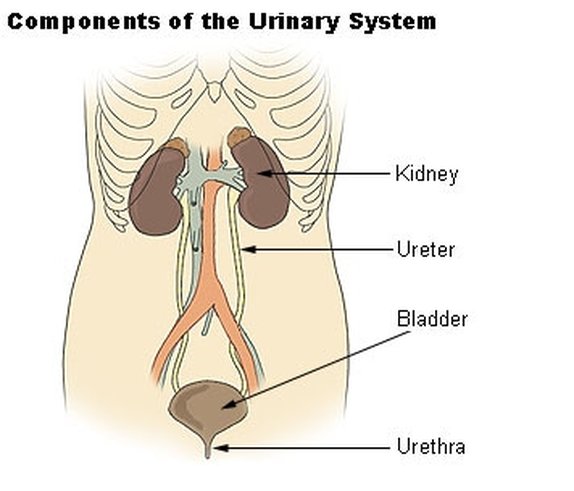
Human urinary system consists of two kidneys, two ureters, a urinary bladder, a urethra and sphincter muscles.
The main function of urinary system is to elimination waste in the form of urine. The kidneys create the urine by filtering out unwanted waste. The kidney also maintain pH and omsoregulation.




